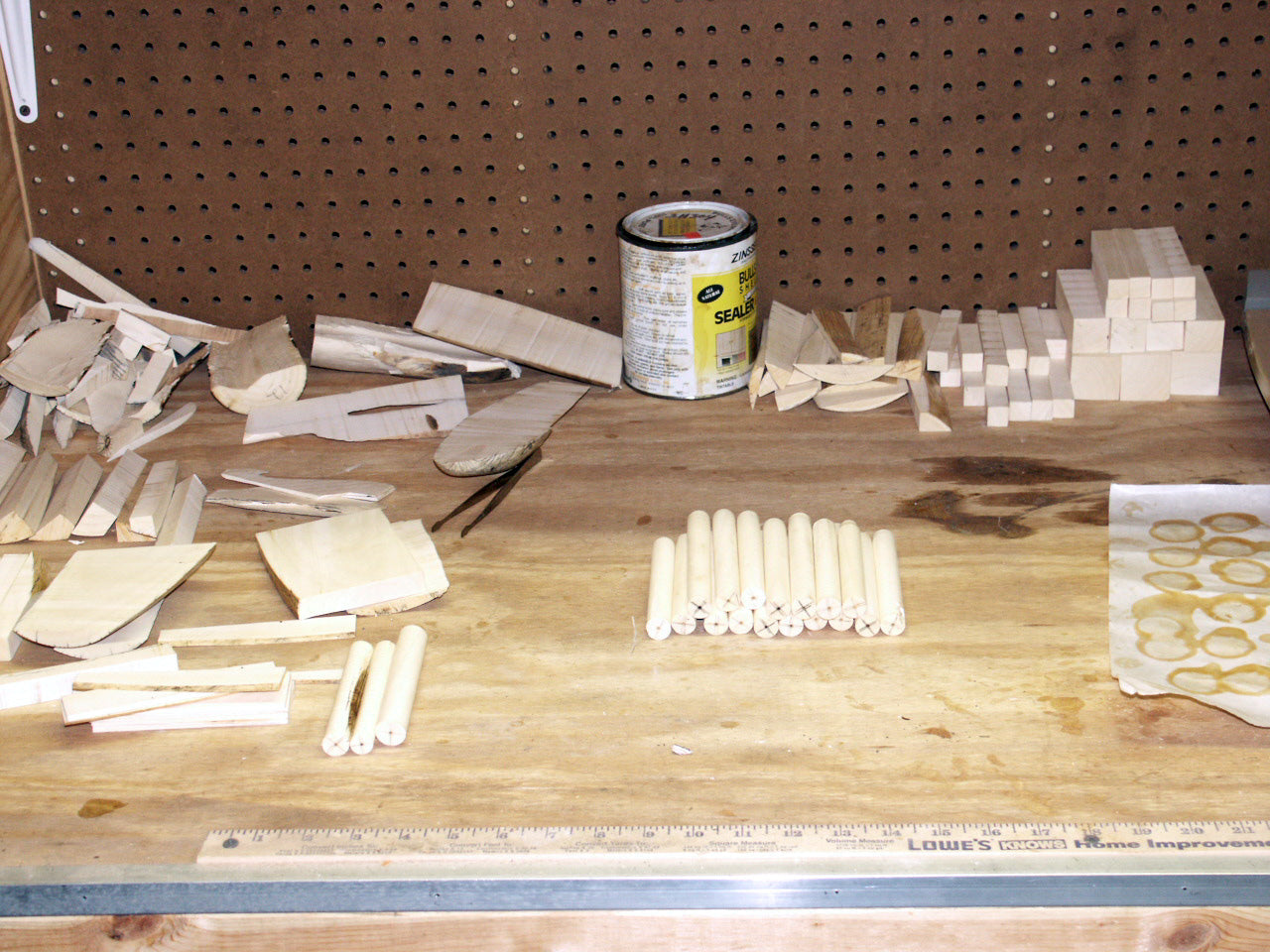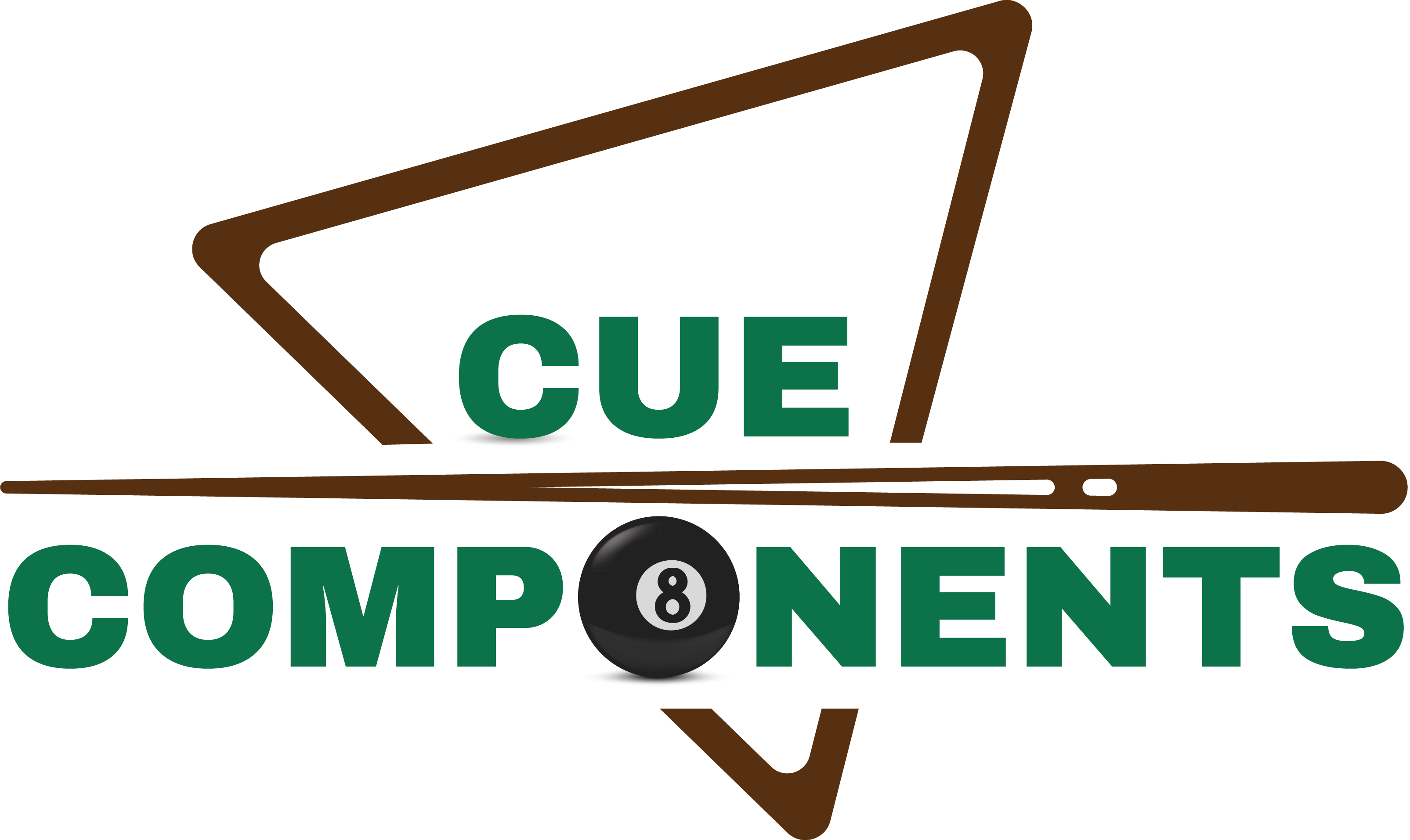
Cutting Elephant Ivory
This shows our scrap work bench with miscellaneous pieces. All these pieces have value. They are either ferrules, joints, butt caps or inlay slabs. All our ivory is pre-ban, natural in colour and never bleached.
Elephant Ivory Tusk Section

Here is a fabulous and magnificantly clean piece of a tusk section which we own. We purchased a 90lb tusk section and have been using it since (and no, it's not kept at the shop). This particular piece is almost 6" in diameter and over 5" in height; I believe it weighs 6 or so pounds.
Watch how we transform this little gem of a section into usable stock.
Ivory Tusk Section Halves
The first thing we do is basically cut it in half. From these halves we then cut them further to produce various cue stock materials; ferrules, joints, butt caps and inlay slabs.
Cutting is tricky as we want to maximize our turning stock and minimize waste. It takes years of experience to cut a tusk section into usable materials with minimal waste.
Cutting Butt Cap Stock
Now that we have two halves we further cut one half section into butt cap squares as is shown here. Out of each half we will get 1 butt cap slab which will yield 15 butt caps. We are only making butt caps out of one half and so our yield will be only 15 butt caps (from 3 squares) as opposed to using the two half section slabs to yield 30 but caps.
The other half section will be cut for joint stock and will yield 20 joints (from 4 squares).
Cut Square Stock
Now that we have two halves we further cut one half section into butt cap squares as is shown here. Out of each half we will get 1 butt cap slab which will yield 15 butt caps. We are only making butt caps out of one half and so our yield will be only 15 butt caps (from 3 squares) as opposed to using the two half section slabs to yield 30 but caps.
The other half section will be cut for joint stock and will yield 20 joints (from 4 squares).
Tusk Section Finished
If you guessed ferrule materials, you were right. From the two large remaining outer sections left over from the joint and butt cap halves, we got additional ferrule material. We ended up with 4 squares from each half and so we have 8 ferrule squares. We always cut ferrule material from the outer edges of every tusk section. We believe through many years of experience that these areas produce the finest ferrules.
So, to recap... The tusk section was over 5" in height so each square will yield the following.
3 butt cap squares (15 butts caps)
4 joint squares (20 joints)
8 ferrule squares (40 ferrules)
And... look at all the scrap which we will cut down into inlay slabs.
Turning Square Stock
Now what we do is find the center of each square and place it in our lathe and off we go! Each square is turned down to the proper diameter for usable round cue stock which we use ourselves and resell to other cue builders.
Turning Stock Round

This shows the square stock turned round. See how simple it is. Don't believe it as it's not an easy task not to mention the hazards of cutting Elephant Ivory.
We then take each round section and cut it into 1" or so ferrules.
The End Result

This shows some ferrule stock which has already been turned round. From that we then cut the long round stock into 1" ferrules (center). We then dip each ferrule in shellac to seal them (right 3 ferrules).
All done and we do hope you enjoyed this little tour. Thanks for visiting.
Cutting Large Inlay Slabs

Here is another super large and a real gem of a tusk section. It is approxmately 12.5" in overall length at the short end. The diameter is approximately 5.5" and weighs almost 17 pounds. A georgous section.
Share
